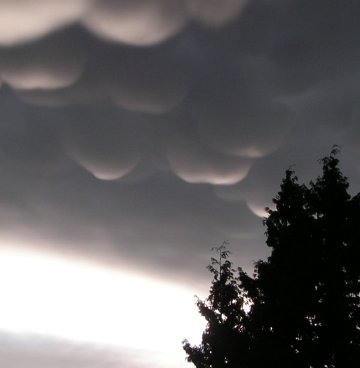| TIGER STRIPES: High-resolution images of tiger stripes on Enceladus have just arrived from Saturn. The photos, taken by NASA's Cassini probe, reveal a sharply grooved landscape littered with blocks of ice. Researchers are working now to match up features in the photos with geysers of icy water seen in earlier flybys. Stay tuned for updates and, meanwhile, take a look at the images. DON'T STOP WATCHING: The Perseid meteor shower is still active. International observers counted 100 meteors per hour at maximum on August 13th: data. The shower is presumably declining now, not to zero. Some 20 to 40 meteors per hour may yet be seen during the dark hours before dawn on Thursday, Aug. 14th. Earlier today, an exploding Perseid fireball left this smoky trail of debris over Pauleasca, Romania: 
"I missed the fireball itself, but photographed the debris twisting in the wind," says photographer Vlad Dumitrescu. "Later, the trail made a loop and encircled the Pleiades. Here is the entire sequence." 2008 Perseid Meteor Gallery
[Previous Perseids: 2007, 2006, 2005, 2004, 2002, 2001 ] MAMMATUS CLOUDS: It is a curious fact of Nature that the underbelly of an exhausted thunderstorm resembles the underbelly of a cow. These are called mammatus clouds: 
Andy Jarosz took the picture just hours ago in rain-soaked St Albans, UK. It was once thought that this type of cloud signaled the approach of bad weather, but new research shows the opposite is true. Mammatus clouds are most often seen when storms are breaking up. Indeed, "these appeared at the end of a very stormy day," he says. What exactly causes mammatus clouds? It's a big undulating mystery. For details, see "The Mysteries of Mammatus Clouds," D. M. Schultz et al, Journal of the Atmospheric Sciences, Volume 63, Issue 10 (October 2006).
August 2008 Aurora Gallery
[Aurora Alerts] [Previous Augusts: '07, 06, 05, 04, 03, 02] | 
